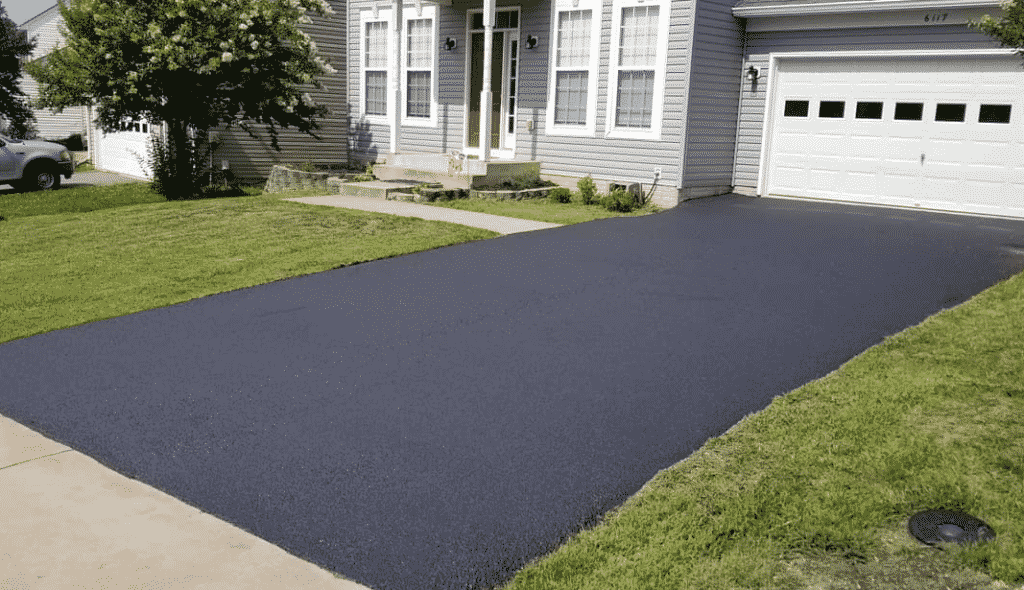Warm Mix Asphalt: A Lasting Option for Sidewalk
Warm Mix Asphalt (HMA) has actually arised as a leading lasting choice for sidewalk services, providing a myriad of cutting-edge innovations and ecological advantages. Its capacity to reuse products and minimize power consumption presents a compelling case for its fostering in roadway construction projects. The lasting efficiency and toughness of HMA make it a favored option for facilities growth. As the demand for green building and construction techniques expands, checking out the nuances of HMA's sustainability can provide important insights into the future of sidewalk options.
Environmental Benefits of Hot Mix Asphalt

Moreover, Warm Mix Asphalt assists to minimize metropolitan warmth island effects. Its dark shade absorbs sunlight, reducing the amount of heat showed back right into the atmosphere contrasted to lighter-colored sidewalks. This can decrease ambient temperature levels in city locations, lowering the demand for air conditioning and inevitably minimizing power consumption.
Additionally, Warm Mix Asphalt adds to improved stormwater administration. Its permeable nature permits water to recharge and infiltrate the pavement groundwater materials, minimizing drainage and the threat of flooding. These ecological advantages make Warm Mix Asphalt a lasting selection for leading freeways and roads.
Energy Effectiveness in HMA Manufacturing
Is power effectiveness an essential aspect in the production of Hot Mix Asphalt (HMA)? Power plays a substantial function in the production of HMA, affecting both price and environmental sustainability. One essential facet of power effectiveness in HMA manufacturing is the usage of warm mix asphalt (WMA) modern technologies.
Moreover, advancements in plant innovations have actually led to more energy-efficient HMA production procedures. By maximizing energy usage in HMA manufacturing, the industry can decrease its carbon impact while keeping top quality sidewalk products.
Recyclability of Warm Mix Asphalt
The recyclability of Hot Mix Asphalt (HMA) is a critical facet of its sustainability and lasting environmental impact. HMA is among one of the most recycled materials in the United States, with over 100 million heaps of reclaimed asphalt pavement (RAP) being reused every year in brand-new sidewalk construction. Recycling HMA provides numerous ecological benefits, such as decreasing the requirement for virgin products, decreasing power intake throughout manufacturing, and decreasing the quantity of waste sent to landfills.
The procedure of recycling HMA involves crushing the existing sidewalk, crushing it into smaller sized pieces, and mixing it with brand-new accumulation and asphalt binder to create a recycled mix. Overall, the recyclability of HMA plays a substantial duty in promoting sustainable techniques within the pavement industry.

Long-Term Performance of HMA
Asphalt pavements demonstrate toughness and strength over an extensive duration, mirroring the long-lasting efficiency of Warm Mix Asphalt (HMA) The long life of HMA can be great site credited to like it its capacity to withstand hefty website traffic lots, rough weather, and the results of aging. Researches have actually shown that properly designed and appropriately built HMA pavements can last for two decades or even more with normal maintenance. The trick to optimizing the lasting performance of HMA depends on making use of high-grade materials, following best techniques in building and construction, and applying efficient maintenance strategies. Correct drain, routine inspections, and timely repairs are essential for maintaining the structural integrity of HMA sidewalks gradually. Additionally, advancements in HMA modern technology, such as using polymer-modified binders and warm mix asphalt, have actually even more enhanced the longevity and durability of HMA sidewalks. By focusing on quality building and construction and maintenance techniques, HMA remains to confirm itself as a economical and sustainable option for lasting sidewalk infrastructure.

HMA: Toughness and Sustainability
Showing both resilience and sustainability, Hot Mix Asphalt (HMA) has actually become a keystone in the building and construction of lasting pavement facilities - regrading. HMA's longevity originates from its capability to stand up to hefty tons, harsh weather condition problems, and high traffic quantities, making it a dependable selection for streets, freeways, and airport runways. The make-up of HMA, which generally consists of aggregates, binder, and filler, plays a vital role in improving its long life and resistance to wear and tear
In addition, HMA's sustainability lies in its recyclability and energy-efficient production procedure. The capacity to reuse check here recovered asphalt sidewalk (RAP) in brand-new HMA mixtures minimizes the need for virgin products and minimizes the environmental effect of sidewalk building and construction and maintenance. Furthermore, the power performance of producing HMA hinges on its lower mixing temperature levels contrasted to other pavement materials, causing lowered power consumption and greenhouse gas emissions.
Final Thought
To conclude, hot mix asphalt (HMA) uses a lasting option for sidewalk with its eco pleasant characteristics. HMA's recyclability, energy efficiency in production, and lasting resilience make it an environment-friendly selection for roadway building. By saving natural deposits, minimizing waste, and reducing greenhouse gas discharges, HMA plays an important function in promoting sustainability in facilities development. Its ability to mitigate urban warmth island results better emphasizes its relevance in producing ecologically mindful and durable pavement systems.
HMA is one of the most recycled materials in the United States, with over 100 million tons of redeemed asphalt pavement (RAP) being recycled yearly in new sidewalk construction.The procedure of recycling HMA entails grating the existing sidewalk, crushing it into smaller sized pieces, and blending it with new accumulation and asphalt binder to create a recycled mix.Asphalt sidewalks demonstrate durability and durability over an extended duration, reflecting the long-lasting efficiency of Hot Mix Asphalt (HMA) In addition, developments in HMA modern technology, such as the use of polymer-modified binders and cozy mix asphalt, have additionally enhanced the toughness and longevity of HMA pavements. The capacity to reuse recovered asphalt sidewalk (RAP) in new HMA blends lowers the demand for virgin products and decreases the environmental effect of sidewalk construction and maintenance.